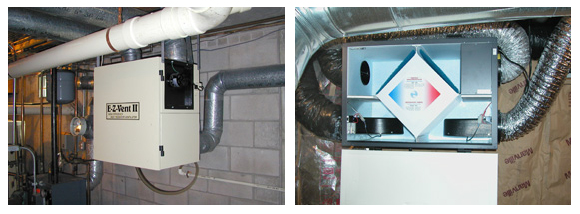Call Us (508) 429-8919
Generally speaking, the older the house the more difficult it will be to reduce the radon levels. This is because the first step in stopping the radon gas from entering the house will be to prevent as much air as possible from coming from the ground into the basement and older houses have leaky foundations. In some cases parts of the basement may not now be accessible. Newer houses have poured cement foundations of a standard thickness and already stop most of the radon from entering. Foundations on multiple levels and houses with additions to the basement are also more complicated to fix.
The cost of installing a radon mitigation system can range depending on the age and style of the house, as well as the radon remediation needed. The actual cost to fix a given house can only be determined by an on site inspection. This inspection includes a test of the material under the basement floor which will help determine the airflow needed and the extent to which suction can be created. Companies that do not do a site inspection and floor test will most likely sell you a generic system which may or may not do the job or removing the radon. We do the floor test as part of our FREE estimate to ensure the right solution is put in place the first time.
Our free and no obligation estimate process includes a thorough inspection of your basement to ensure that we design the proper radon mitigation system for your home.
An active sub slab depressurization "SSD" radon system works by drawing air out from beneath the basement floor so that the air pressure in the basement is greater than the air pressure below the house and the radon gas cannot push into the house against the greater pressure. This system works extremely well as long as most of the foundation leaks are sealed and as long as air can travel through the ground (sand or gravel) to the system suction points. If the foundation is too leaky or the ground is too tight (dirt or clay) a different system has to be used. The SSD method costs little to run (usually 50-90 watts), does not take warm house air away, and is quiet. The SSD system must be vented above the edge of the roof where it is installed and meet other EPA guidelines as well. These systems must be installed by a radon mitigation professional.
A crawl space with open earth and ledge outcroppings and an older basement with no floor at all.

Two different brands of HRV units with 6" ductwork to outside vents near ground level.
If the SSD method cannot be used, or if it didn't reduce the radon enough, a different type of system may be added. The heat recovery ventilator "HRV" (also known as an air to air heat exchanger) takes the stale radon bearing basement air and sends it outdoors while bringing in clean outside air from above ground to dilute the radon levels to an acceptable amount. The ventilator recovers part, but not more than half, of the heat that would be lost if you were using fans alone. The HRV also can filter out dust and pollen and does remove some humidity. The unit uses a fair amount of electricity (usually 250-350 watts) and sounds like a window air conditioner when running. The vents from the HRV can exit the house at ground level and do not have to reach the roof.
The Radon reduction system from the basement floor to the exhaust fan outside with a vent pipe to roof.
The RADon system from the basement through closets to an exhaust fan vented out the attic roof.
There are also other methods that may also be used to reduce the radon levels in homes that cannot use these methods. Some systems have drawbacks that make them less desirable in this part of the country and systems installed by non professionals can actually create hazards in other parts of the house even while fixing the basement radon problem. Be sure to hire a professional in order to determine the best method for you.
GET STARTED TODAY —
REQUEST A QUOTE
Fill out the form below to get more information. *are required fields
